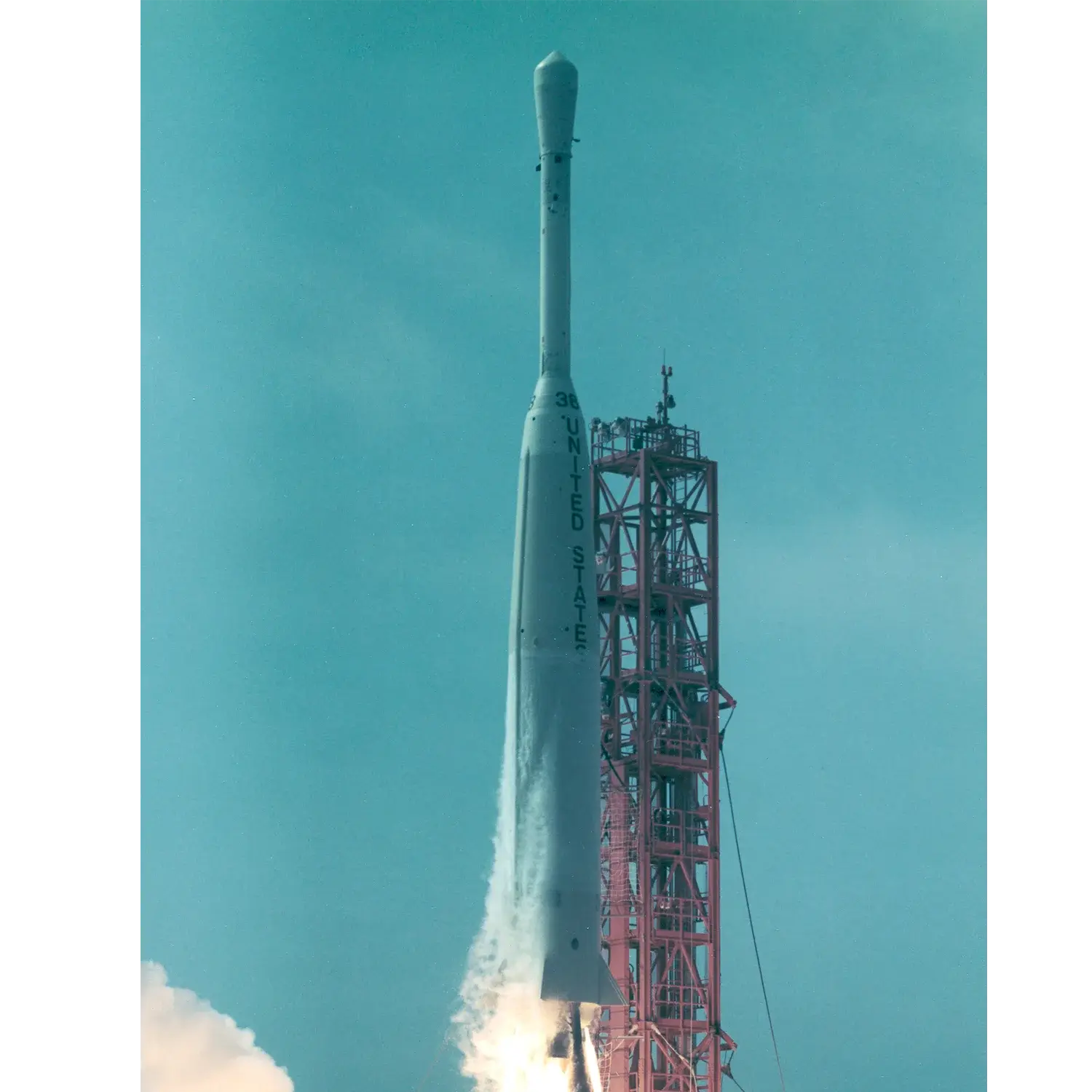Explorer 32 (AE-B)
Launch Success
Liftoff Time (GMT)
14:00:00
Wednesday May 25, 1966
Watch Replay
24/7 Coverage
Mission Details
Explorer 32 (AE-B)
Explorer 32 was an aeronomy satellite which was designed to directly measure temperatures, composition, densities, and pressures in the upper atmosphere on a global basis. The satellite was a stainless steel, vacuum-sealed sphere, 0.889 m in diameter. The experimental payload included one ion and two neutral mass spectrometers, three magnetron density gauges, and two electrostatic probes. Additional equipment included optical and magnetic aspect sensors, magnetic attitude and spin rate control systems, and a tape recorder for data acquisition at locations remote from ground receiving stations. The two neutral-particle mass spectrometers failed about 6 days after launch. The remaining experiments operated satisfactorily and provided useful data for most of the 10-month satellite lifetime. The spacecraft ceased to function due to battery failures which resulted from depressurization of the sphere.
Highly Elliptical Orbit
1 Payload
225 kilograms
Rocket

Launch Site
Stats
Delta C
10th
Mission
2nd
Mission of 1966
1966
51st
Orbital launch attempt
